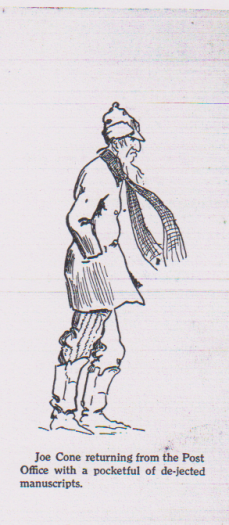Its Time Has Come Again
Since the earliest human beings emerged from the murky waters to begin their earthly existence, they dreamed of living in a warm cottage with indoor plumbing in a community with low taxes where they could be healthy, wealthy, and thinner.
They established a small New England village characterized by its historical heritage, natural beauty, nearby cultural attractions, vibrant Main Street, and a recreational shoreline. And, they called their place Old Saybrook and creative and caring people who lived there made it special.
That may not be exactly how it came to be but there is no doubt that “creative and caring people” have made a significant impact on Old Saybrook. They did it as volunteers in civic organizations whose sole purposes were to improve the town.
There may be something to learn from their efforts and experiences.
One early organization was The Pattaquasett Improvement Association, established in June 1878 to maintain the village of Old Saybrook in “a neat and pleasant way.”
They raised money by holding lectures, concerts and “other entertainments,” with the primary objective to “improve the streets and highways in respect to sidewalks, crossings, planting of trees, lighting and clearing away of bushes.”
That organization seemed to fade from history but by December 1905 another seed was planted by artist, writer, printer Joe A. Cone who proposed the creation of the Old Saybrook Musical and Dramatic club. Joined by other community minded individuals they incorporated in November 1906 “for the avowed purpose of purchasing land and building a public hall thereon.”
They wrote and gave plays, held concerts, sponsored suppers and within two years raised enough funds to purchase a piece of land from Giles Bushnell next to the graded school on Main Street.
 The Deep River New Era reported they were proud property owners and “boldly encouraged by the staunch support and patronage of the general public and working with a peculiar good will and unanimity among themselves, another series of money-raising schemes emboldened the club to offer the plot of ground to the town for the erection of a hall.”
The Deep River New Era reported they were proud property owners and “boldly encouraged by the staunch support and patronage of the general public and working with a peculiar good will and unanimity among themselves, another series of money-raising schemes emboldened the club to offer the plot of ground to the town for the erection of a hall.”
The town fathers (mothers could not vote yet), recognizing a sweet deal, voted at a town meeting to accept the offer of the club.
The building was designed by architect James Sweeney and built by contractor W.L. Roe, both of New London, and the 45 x 85 foot structure was used by the Musical and Dramatic Club and became the Town Hall and is today the Katharine Hepburn Cultural Arts Center.
Another notable volunteer organization formed In April 1901 and called themselves the Old Saybrook Town Improvement Association (OSTIA).
They existed until 1929 and planted trees, dug a well for “man and beast,” suggested the trolley route, urged lights and bells for bicycles, promoted mosquito extermination, opposed billboards, organized school children to destroy tent worm caterpillars, urged limiting the number of electric light poles, placed rest benches on Main St., organized a choral group, proposed a town-wide clean-up day, encouraged an Honor Roll for servicemen, created a garden club, sought improvements in the railroad station and much more.
In the early 1900s Old Saybrook and many other small towns established improvement associations to hold events, raise funds and support worthy local causes. It was a timely idea and delivered constructive results. Its time has come again.
Copyright Tedd Levy
